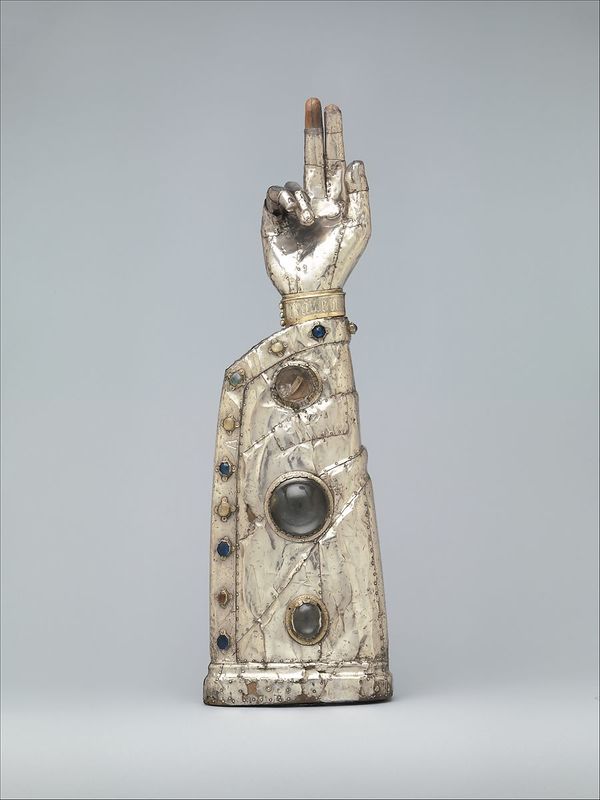Body Part Reliquaries
One unique aspect of reliquaries is the many forms they can take. Many examples of reliquaries exist decorated with precious metals and gems, or in various shapes and intended for different purposes in religious services, veneration, or special occasions such as feast days. Some of the most interesting examples of reliquaries, however, take the form of body parts, meant to contain a relic of a saint which matches its container. These types of reliquaries are sometimes referred to as speaking reliquaries, due to the way they immediately convey the nature of the relic contained within them. Some of these reliquaries even employed the use of glass or gems in order to allow the relic to be seen through the reliquary itself. For example, the Arm Reliquary to the right uses glass and rock crystal embelishments which demonstrate the importance of the relic. The fingers of it are carved in the shape of a blessing, and it would have sat on an altar or been held aloft in a procession for Saint Fiacre, whom the relics within were attributed to.
This Shoe Reliquary likely would have contained the foot of a saint. It may have been hung over the beds of pregnant women from the loop at the back of the case. The reliquary is decorated with various scenes from Saint Margaret the Virgin's life, including one in which she was swallowed by Satan disguised as a dragon and burst forth from his stomach. Saint Margaret is, among other things, the patron saint of childbirth and pregnant women. This shoe reliquary demonstrates the many unique ways in which relics and their power were integrated into people's religious lives: in the day to day occurances and the sacred. However, in many cases the claims regarding what relics were preserved within speaking reliquaries were debunked. In the absence of a relic and holy connection to a saint, these reliquaries remain remarkable pieces of artwork, with detailed sculpting and beautiful additions of gemstones and gilding, but lack the spiritual aspect that made them so important in the cult of saints.

